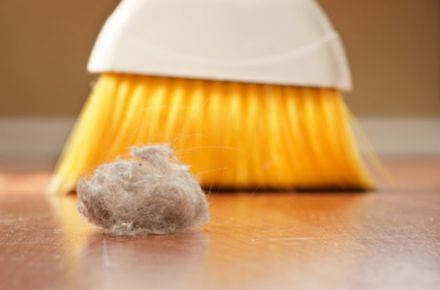When you have a dust mite allergy, you are allergic to the little microscopic organisms that live in dust around the house. Dust mites feed off of our dead skin and then leave their droppings around the house. The symptoms of a dust mite allergy are close to the symptoms of a pollen allergy and asthma.
These mites live in your bedding, carpets, furniture, and carpets. They die in winter but are alive in the summer, but if you have a nice warm and humid home in the winter they will survive. When you see things floating in the sunlight those are particles from dead dust mites and also their wastes. The wastes that are floating around are what cause the allergic reaction.
Dust Mite Allergy Symptoms
Dust mites cause some of the most common allergy symptoms. Asthma, watery and itchy eyes, having a stuffy nose or ears on a daily basis, repeatedly sneezing when you wake up, eczema, sneezing, runny nose, feeling better when you are outside of the house, constantly waking up through out the night, postnasal drip, and facial pressure or pain.
When you have a large amount of dust mites living in your home this will cause a large amount of waste. This waste is what causes you to feel ill, have allergies, and even causes fatigue. Fatigue is when you lack motivation or energy, feel weary and tired, and have a lack of sleep. When these symptoms last more then a week you know they are not just a common cold. It is sometimes hard to tell the difference between allergies and a common cold.
Managing A Dust Mite Allergy
If you suspect that you are allergic to dust mites and are experiencing a lot of fatigue consult with your doctor. They can perform various blood tests and skins tests to determine if you do have the allergy. If you do find out that you are suffering from a dust mite allergy you can lower the number of dust mites living in your house.
Get rid of excess furniture that is not being used in the house, clean the floors and walls with wet cloths, when dusting use a wet cloth (a dry one will just stir up the dust), wash rugs and bedding once a week, use a bagless vacuum with an allergen filter, and try to vacuum at least twice a week.
When you are cleaning and dusting, wear a mask so you are less likely to inhale the feces of dust mites. They hate dry, cold air so try to air out the house once a day or as often as possible. Doing these things will lessen the allergic reaction and hopefully lessen the chronic fatigue you are experiencing. You may need medication if the symptoms worsen or cause you to have asthma.
A Final Note
If you've come to this article because you're experiencing symptoms often associated with allergies, keep in mind that dust mites are not the only culprit. This is especially true during the spring and fall, when leaf mold, ragweed, and other allergens are at their peak. Consider whether your allergy symptoms are seasonal.
Only an allergen test can tell you exactly what you're allergic to. Many people experience allergies to some degree, especially seasonally. If your allergy symptoms are mild to moderate, you more than likely don't need to go to a doctor. You can manage your symptoms by regulating your exposure to suspected allergens, keeping your home clean, and getting fresh air when you can.
If your allergy symptoms become severe, that's when it's time to visit your doctor. Your doctor can prescribe medication to manage your allergy symptoms, test you for specific allergens, and recommend additional lifestyle changes to help mitigate symptoms. Never attempt to medicate your allergies yourself, beyond standard OTC allergy treatments like Claritin.
None of the content in this article should be taken as professional medical advice. Always consult with a qualified, licensed medical professional before making decisions that affect your health or the health of your family. Always practice due diligence on matters pertaining to your health and the health of your family.
The image featured at the top of this post is ©Suzanne Tucker/Shutterstock.com.
